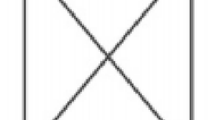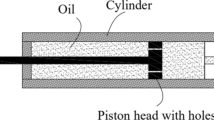Abstract
Earthquakes as a sudden rupture phenomenon have always been one of the most challenging design criteria for structural engineers around the globe. The disaster caused by the earthquake not only ruins buildings, cities, and roads but also leaves big financial loss, and puts human life at serious risk. The collapse of structures due to earthquake motions amplified concerns of structural engineers in finding more accomplished techniques for dissolving the released energy of earthquakes by structures. Structure vibration is the main concern of structural engineers. The inevitable occurrence of earthquakes and imposing plenty of damage lead to finding a proper and trustworthy solution to encounter this natural phenomenon. Passive energy dissipation systems have been successfully implemented in buildings around the world to reduce the structural response, principally due to earthquakes. The damping effect on the system is obtained without any external loading and the performance of these is achieved by the earthquake excitation. A friction damper is a kind of passive damper that dissipates the induced energy by a displacement control mechanism. In this study, 7-story reinforced concrete buildings are designed and modeled in SAP2000 software to investigate the effectiveness of the building with friction dampers. The nonlinear time-history analysis has been performed using various earthquake ground motion records for three different layout configurations as moment-resisting frames with and without X-braced and inverted V-braced friction dampers. Maximum story drifts and base shear forces are determined. In this study, earthquake acceleration records were applied simultaneously in both directions (x, y) of the structure while performing nonlinear time-history earthquake analyses. The results show that buildings with friction damper configurations showed good performance under all the selected earthquakes. The buildings with X-braced friction dampers configurations indicated better performance than the other configurations.















Similar content being viewed by others
References
Pall AS, Marsh C (1982) Response of friction damped braced frames. J Struct Div 108(6):1313–1323
Monir HS, Zeynali K (2013) A modified friction damper for diagonal bracing of structures. J Constr Steel Res 87:17–30. https://doi.org/10.1016/j.jcsr.2013.04.004
Gholizad A, Kamrani MP (2014) Friction damper dynamic performance in seismically excited knee braced steel frames. Int J Civ Eng 12(1 and A):32–40. http://www.ijce.iust.ac.ir/article-1-691-en.html
Armali M, Damerji H, Hallal J, Fakih M (2019) Effectiveness of friction dampers on the seismic behavior of high rise building vs shear wall system. Eng Rep 1(5):1–14. https://doi.org/10.1002/eng2.12075
Banerjee S, Patro SK (2016) Inelastic seismic response of building with friction damper. J Inst Eng India Ser A 97(4):395–404. https://doi.org/10.1007/s40030-016-0184-9
Mirzabagheri S, Sanati M, Aghakouchak AA, Khadem ES (2015) Experimental and numerical investigation of rotational friction dampers with multi-units in steel frames subjected to lateral excitation. Arch Civ Mech Eng 15(2):479–491. https://doi.org/10.1016/j.acme.2014.05.009
Samani HR, Mirtaheri M, Zandi AP (2015) Experimental and numerical study of a new adjustable frictional damper. J Constr Steel Res 112:354–362. https://doi.org/10.1016/j.jcsr.2011.03.004
Ghorbani HR, Rofooei FR (2020) A novel double slip loads friction damper to control the seismic response of structures. Eng Struct. https://doi.org/10.1016/j.engstruct.2020.111273
Sinha AK, Singh S (2017) Seismic protection of RC frames using friction dampers. Int J Civ Eng Tech (IJCIET) 8(2):289–299
Barbagallo F, Bosco M, Floridia A, Marino EM, Rossi PP (2020) Design for seismic upgrading of existing RC frames by friction dampers. Ingegneria Sismica-Int J Earth Eng 37(1):5–18
Artar M, Carbas S (2022) Optimum sizing design of steel frame structures through maximum energy dissipation of friction dampers under seismic excitations. Struct 44:1928–1944. https://doi.org/10.1016/j.istruc.2022.08.119
Taiyari F, Mazzolani F, Bagheri S (2019) Damage-based optimal design of friction dampers in multistory chevron braced steel frames. Soil Dyn Earth Eng 119:11–20. https://doi.org/10.1016/j.soildyn.2019.01.004
Zahraei SM, Moradi A, Moradi M (2013) Using pall friction dampers for seismic retrofit of a 4-Story steel building in Iran. Top Dyn Civ Struct 4:101–107. https://doi.org/10.1007/978-1-4614-6555-3_12
Jarrahi H, Asadi A, Khatibinia M, Etedali S (2020) Optimal design of rotational friction dampers for improving seismic performance of inelastic structures. J Build Eng. https://doi.org/10.1016/j.jobe.2019.100960
Pall A, Pall RT (2004) Performance-based design using pall friction dampers-an economical design solution. 13th World Conference on Earthquake Engineering. Vancouver, B.C., Canada
Wu B, Zhang J, Williams MS, Ou J (2005) Hysteretic behavior of improved Pall-typed frictional dampers. Eng Struct 27(8):1258–1267. https://doi.org/10.1016/j.engstruct.2005.03.010
TBEC (2018) Turkish building earthquake code. The Ministry of Public Works and Settlement, Ankara
SA P2000 (2018) Integrated finite element analysis and design of structures basic analysis reference manual (V202). Computer and Structures Inc, Berkeley
AFAD. Ministry of Interior Disaster and Emergency Management Presidency, Ankara, Turkey. https://www.tdth.afad.gov.tr. Accessed 2018
http://www.palldynamics.com/DesignWithFrictionDampers. Accessed 2019
Afsari L (2019) Seismic analysis model of V or X braced frames using friction damper on concrete buildings. MSc thesis, Graduate School of Natural and Applied Sciences, Eskişehir Osmangazi University, Department of Civil Engineering, Turkey
PEER Ground-motion database (2018) Pacific Earthquake Engineering Research Center, Berkeley. https://www.ngawest2.berkeley.edu/site. Accessed 2018
Author information
Authors and Affiliations
Corresponding author
Ethics declarations
Conflict of Interest
On behalf of all the authors, the corresponding author states that there is no conflict of interest.
Additional information
Publisher's Note
Springer Nature remains neutral with regard to jurisdictional claims in published maps and institutional affiliations.
Rights and permissions
Springer Nature or its licensor (e.g. a society or other partner) holds exclusive rights to this article under a publishing agreement with the author(s) or other rightsholder(s); author self-archiving of the accepted manuscript version of this article is solely governed by the terms of such publishing agreement and applicable law.
About this article
Cite this article
Afsari, L., Gökdemir, H. & Günaydın, A. Seismic Analysis of RC Buildings Using X-Braced and Inverted V-Braced Friction Dampers. J. Vib. Eng. Technol. 12, 1673–1686 (2024). https://doi.org/10.1007/s42417-023-00934-4
Received:
Revised:
Accepted:
Published:
Issue Date:
DOI: https://doi.org/10.1007/s42417-023-00934-4




